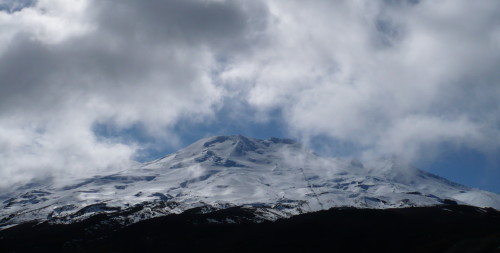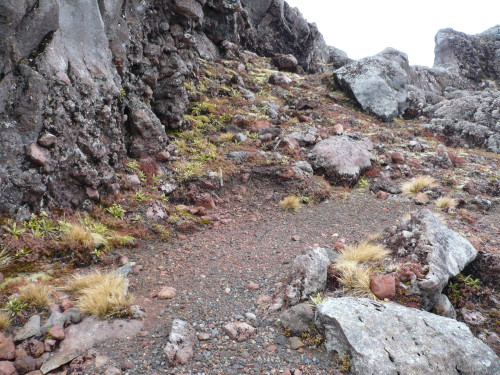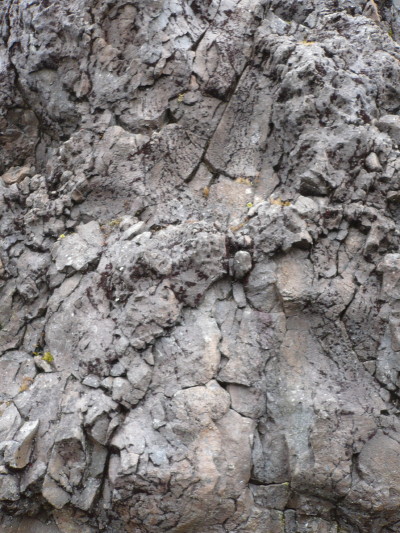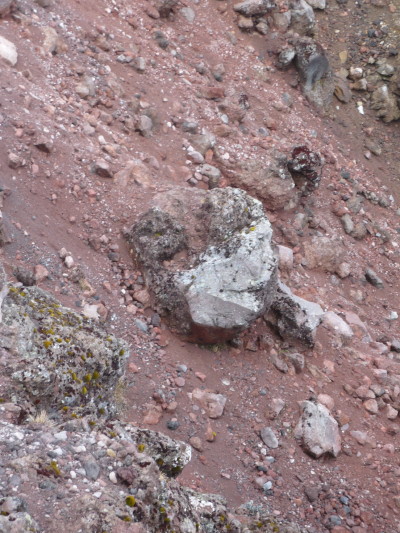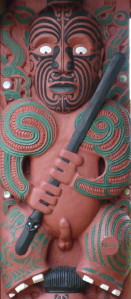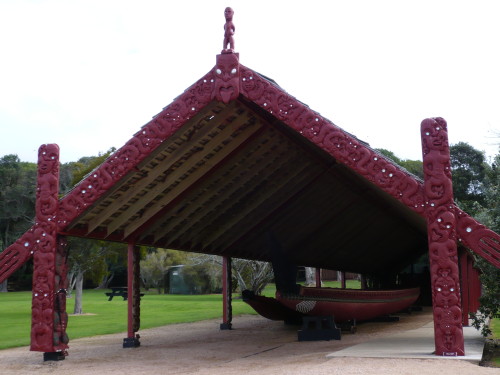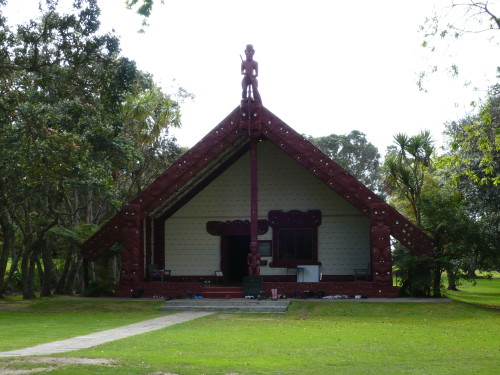
So, at last, I have been to Uluru. To the Uluru Kata-Tjuta National Park, to be precise. It was a 24 hour stopover – the flights from and back to Sydney essentially free, included in the globe-trotter ticket I bought for this trip downunder. I arrived at about 1pm at the Voyages Resort, where there are hotels for all budgets, (and the cheapest is dear for a backpacker) all run by the one company that got the government concession here. The first thing you notice as you get off the plane is the heat. It is 36deg here. The Park is some 40km from
Uluru, outside the National Park, adjacent to the new airport. My room is basic, but I shall only be putting my head down in it so I am content.
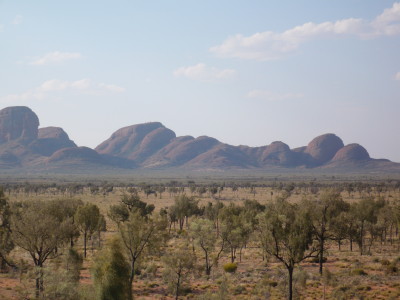
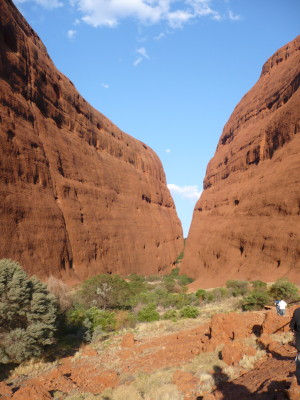
At 4pm, I depart on my first tour – the Kata-Tjuta Dunes Sunset tour. Cherry, guide to the 20 tourists and driver of our mini-van on this Discovery Ecotours trip, is fresh, cheerful, and informative. We visit the large rock formations collectively known by the European name of The Olgas, their aboriginal name, Kata-Tjuta. The local peoples – a cluster of three dialect groupings, are known as the Anangu (pr. ‘ananoo’) but the stories of these lands include peoples from all over Australia. The Anangu have been living here for 22000 years, the deep red centre of this island continent – one of the last areas to be populated. We Europeans first sighted it in the 1870s. Tourism began in the 1950s, which was when the National Park was created – a slice taken out of the Aboriginal Reservation that covers the wider area. In 1985 the Land Rights Act returned ownership of the National Park to the Anangu, on condition that they lease it back to the Australian government for 99years. It was at this point that the resort and airport were relocated out of the Park, and the indigineous people began to have at least something of a say in the running of the land they had occupied for so long. None of them live a nomadic life anymore. They wear western clothes, live in houses, and are prey to the demon drink.
But their culture lives on through their ceremonies, rituals, social structure, language, mores. They have managed to restrict access to much of the park – with the voice of the conservationists on their side keen to preserve this unique environment. Everyone has to pay $25 at the entrance to the park, for a three day ticket. 25% of this goes to the local people. About $6. I spent about $400 here in 24 hours, on hotel room, food, wine, t-shirt, hat…. ..and $6 of it went to the indigenous people.
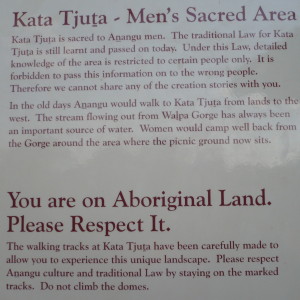
Kata-Tjuta is the ancient sacred site of the Men’s Mysteries for the aboriginal people, where their young men are initiated to this day, and it is to a carefully fenced-off area with clear walkways and viewing platforms that we are taken, into a gorge that is no longer used by the indigenous people, and their gorges are off limits. Here the trees from which the men make their spears and spear throwers grow, drinking up the rich water source at the foot of the rocks. Only yards away from the rock formations, the desert takes over again, with coarse grass the only greenery that breaks the surface. Somehow, on this tour, with the multi-national cohort and our Australian tour-guide, on the carefully managed paths, it is landscape that we have come to see, and the mystery of this place is carefully hidden from us. Cherry cannot know anything about the mysteries, for she is female, and there are female tourists with us. She explains that amongst local people, only men are allowed to come to Kata-Tjuta. It feels somehow as though sacrilege has been committed. Walking back out of the gorge, back onto the bus, we are taken to a viewing platform on the top of a sand dune, from which to watch the rocks gradually change colour as the sun sets behind us. Cherry gets out bread, oil and balsamic, and a seed mix which includes a local tree bark, and pours sparkling wine into champagne flutes for everyone, except the children who get orange juice. I, of course, tickled by the sheer decadence of this experience, have to mix the too, and soon several of us are quaffing bucks fizz, in the desert, watching the sunset over Kata-Tjuta. It is somehow fittingly colonial, distant and distinct from the true and ancient meaning of the place.
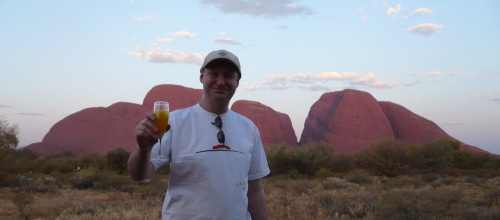
Quite merry by the time we get back to the resort, after buying a better (kangaroo leather) sunhat and a flynet to keep off the extremely irritating desert flies, I bought a plate of raw kangaroo meet and barramundi fish and barbecued it myself on the backpacker-communal barbecues, washing it down with strong aussie wine. Then an early night, and up at 4.30am for the Uluru sunrise tour.
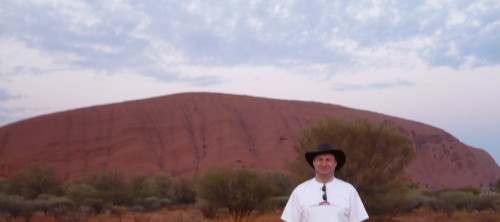
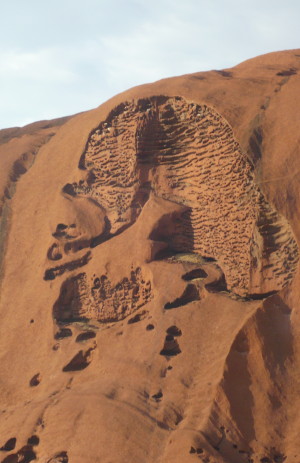
There’s only five of us this morning, and our tour-guide, Jessie, is more experienced and more knowledgeable than Cherry was. Jessie takes us to the viewing area for sunrise, and we watch the colours change, drinking coffee and eating a light breakfast of cereal bars and muffins. Then he drives us around the base of the Uluru, telling us some of the tales of the aboriginal culture that tie aspects of this great rock into the history and mythology of both the local and many more distant peoples. It is quite fascinating. But the tension between landlord and leaseholder is so evident. All the literature from the Voyages Resort, and all the various tour-guide companies that operate here, include the statement from the Anangu that they would rather people did not climb the rock. Yet of course the climb is available and allowed and tour-guides take you up, and we watch the long line of tourists climbing the precarious path – with a steel rope to guide you – up onto the top of the rock. As Jessie explains to us, in the ancient tale of the Mala ancestors, it was a great wise elder who climbed the rock here, to plant the totem-pole announcing the beginning of the men’s mysteries ceremonies. The totem pole is echoed in one of the rock formations. The tourists tread this processional way, as if clambering up onto the High Altar in the Vatican, oblivious to all insult. I saw the request from the Anangu, and did not climb. I did not buy the postcard that said “I respected the wishes of the Anangu and did not climb,” but was amused to see it in the rack.
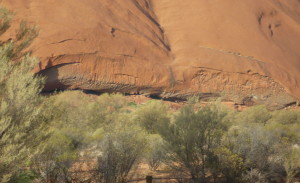
As we drive around the base Jessie tells us a fabulous story about a snake ancestor and her eggs, and the shapes on the sides of the rock that pick out moments of the tale. It is quite fascinating to the see the mythology mapped onto the geology in this way. We leave the bus at a car park and Jessie takes us to see one of the rock-paintings – barely more than a classroom blackboard, really, with a jumble of signs and symbols used to aid in passing on the oral tradition.
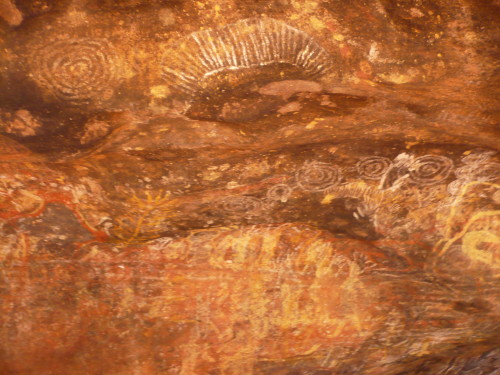
We go right up close to the rock and see into one of the pools of water that collect at its base – surrounded by lush vegetation, small lizards, and more tourists. Then its off to the Cultural Centre – the exhibition space of the National Park, where everything has been prepared by/on behalf of the the Anangnu, and there are shops selling local crafts and artworks. I buy a hand-crafted snake, to remember the story. There are aboriginal women, sitting cross legged on the floor in one of the shops, painting. They chat amongst themselves, in a world completely their own, oblivious to the tourists standing watching them, somehow in another time and place from us altogether. Even now, in their presence, in this shop, I feel that their mystery is hidden from us. It is carefully managed, and very effective. The storyboards in the exhibition tell a little, and then fall silent. Here and there it is mentioned that the true ending of a story is reserved for initiates only. Perhaps, in the end, it is a mark of the victory of the aboriginal people here, that outsiders do not know, cannot understand their ways, their mysteries. They have kept the strength of their magic by keeping silent. It is good.
Having completed the circumference we pull in for a last stop at a viewing platform for a good view of the rock, and Jessie and I take each others’ pictures.
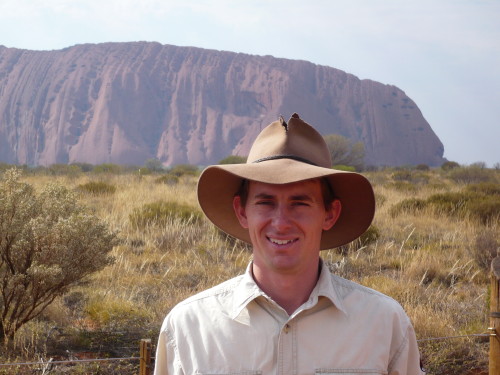
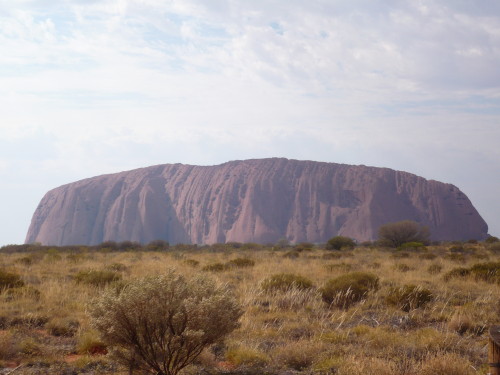
Then it’s back to the resort, for an hour wandering around the visitors centre, where I learn more about the geology and the natural history of the place, and at last back to the airport and back to Sydney.
I am glad to have been there at last, to have at least touched the surface of the mysteries of an ancient people, to have gained, at least, a knowledge of the power of its silence.

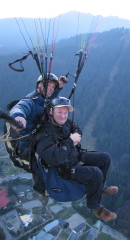
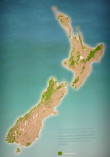
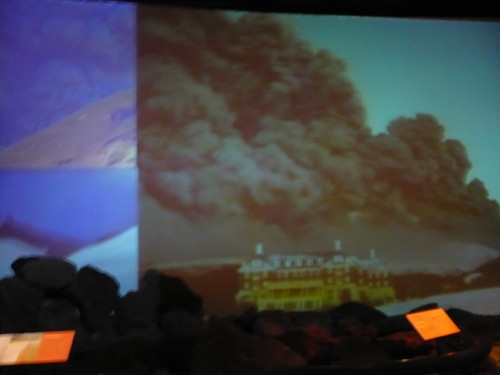
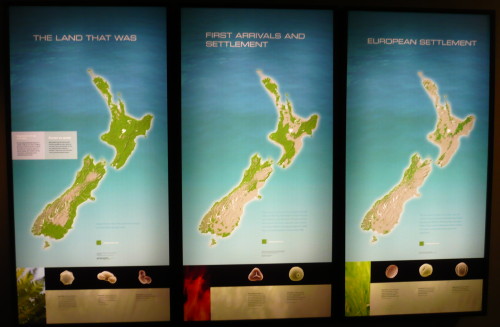

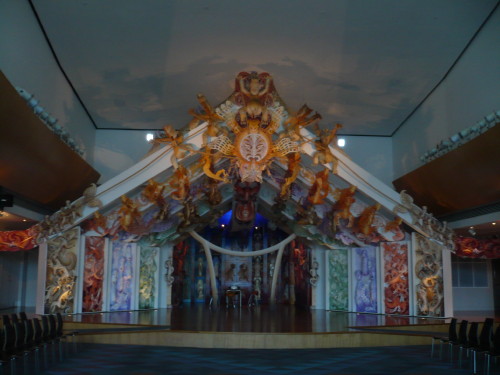
 Today, in the
Today, in the 